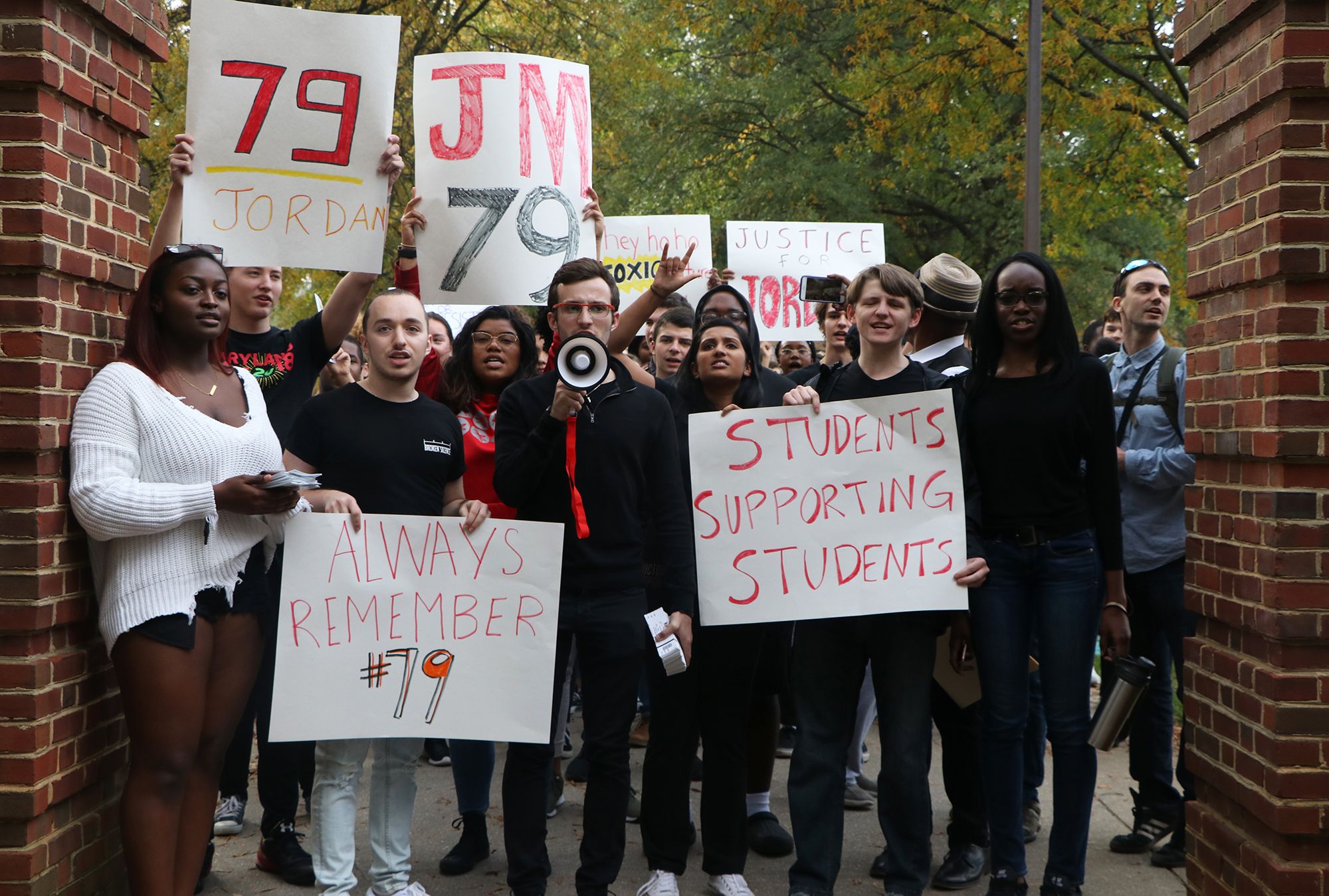Views expressed in opinion columns are the author’s own.
Over the past few weeks, the University of Maryland has been rocked by news related to the athletic department and the preventable death of offensive lineman Jordan McNair. Though we are finally seeing those deemed responsible being held accountable and coming together as a student body to advocate for McNair and student-athletes, a part of the conversation is often glaringly absent: race.
While some student organizations — such as Political Latinxs United for Movement and Action in Society and Students for Justice in Palestine — have certainly recognized the role race has played in these tumultuous proceedings, most student and university leaders have conveniently avoided discussing it. Let us be clear: McNair’s death and everything that has happened related to his death is a race issue. It is a storm of politics, with administrative and authoritative posturing swirling around the fact that black students and black athletes are treated with less care and less humanity at the center.
Would McNair have died if he were white? Would the university have responded differently to his death if he were white?
Though a similar incident involving a white student suffering heatstroke, being neglected and ultimately dying has not occurred at this university, we can look to tragedies at other universities for comparison. In June 2017, Kent State freshman offensive lineman Tyler Heintz died of heatstroke following a team workout. In Heintz’s case, coaching staff took immediate and proper action to combat his heatstroke, though they weren’t able to save him. Kent State University also responded to the player’s death with the firing of a coach deemed responsible within eight weeks of Heintz’s death.
In contrast, we have proof that staff at this university did not respond with proper treatment. During practice on May 29, McNair showed signs of struggling with a workout. Yet, coaches pushed him past his breaking point. As McNair’s health visibly deteriorated, staff still neglected to take action, failing to assess vitals, treat him immediately and have adequate cooling methods nearby.
Across the country, there’s a historical pattern of ignoring and denying black people’s health concerns. For centuries, institutions have treated black people as unable to measure their own health accurately or unworthy of treatment. The culture of toxic masculinity that seems to have plagued the Maryland football program may have been a reason that McNair did not receive immediate treatment, and it likely drives the ridiculous idea that he was at fault for suffering heatstroke in the first place.
It is only now, more than four months after McNair’s death, that the people responsible are facing consequences. Jordan McNair died in June. It took until October for coach DJ Durkin to be fired, and it took even longer for the incompetent training staff who botched McNair’s treatment to leave. The fact that there was still waffling even in the face of blunt reports on McNair’s death and the team’s culture, is disgusting.
This issue will continue if institutions and audiences don’t stop treating black athletes as objects for entertainment. They are not disposable, replaceable pawns who exist solely for the purpose of playing football. Though the game may be their passion — providing scholarship and career opportunities and perhaps becoming a livelihood — the players are people first. At the very least, they are deserving of respect and adequate response to health concerns.
For now, we must recognize that Jordan McNair’s race is significant. Though most students at this university appear to be outraged about McNair’s death, many conversations conveniently neglect to mention McNair’s race, or the role it likely played in his death and the university’s response.
At the SGA-led rally on Nov. 1, there were conflicting chants of “Justice for Jordan” and “Black Lives Matter,” when the truth is that they are one and the same. “Justice for Jordan” is a valid and essential mantra that helps us move toward a safe athletic environment. But it is unnecessary to demote “Black Lives Matter” to a secondary position when promoting it.
What does justice for Jordan McNair involve? At the end of the day, a black student-athlete died under the care of two white trainers, a white strength coach — who resigned almost immediately after being put on leave — and a white head coach. In truth, there is no justice, nothing that can be done to make up for McNair’s preventable death.
Recovering from this mess will include explicitly acknowledging the fact that the university disregarded not only McNair’s health, but also its own wrongdoings. It includes listening to black students and actively working to turn a university that has become notorious for excusing racism into a safe environment for students who should never have felt otherwise.
Jasmine Baten is a junior English major. She can be reached at jasminebaten137@gmail.com.



